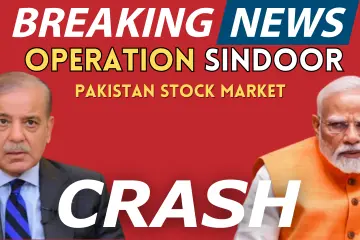The definition of micro, small, and medium enterprises (MSMEs) encompasses a wide range of businesses that play a crucial role in the economy. MSMEs are categorized based on their size and operational scale, with micro-enterprises being the smallest, followed by small enterprises, and medium enterprises.
These enterprises are vital for job creation, innovation, and economic growth. In addition to their size, MSMEs can also be classified as ancillary units or export-oriented units, depending on their focus and contribution to the market.
Understanding the features, objectives, advantages, and disadvantages of MSMEs is essential to comprehend their significance in the business landscape.
A common image of an entrepreneur is as the founder of a new business enterprise that achieves large-scale success. Anita Roddick’s Body Shop, Bill Gates’s Microsoft, and Sam Walton’s Wal-Mart are but many dramatic cases of this type of entrepreneurship. But entrepreneurs also operate on a smaller scale.

Small businesses play a crucial role in the global industrial economy. These are particularly important in developing economies. These thrive everywhere. Small businesses play a major role even in highly developed countries like the USA and Japan. Of the 25 million businesses in the USA today, approximately 24.75 million (99%) can be considered small.
Definition of MSME (Micro Small and Medium Enterprises)
An MSME (Micro, Small, and Medium Enterprise) is a business or company that meets certain criteria in terms of investment and annual turnover.
However, on 13th May 2020, the Central Government revised the definition of MSME (as a part of the introduction of a financial package to strengthen the economy which has been shattered due to Covid 19).
The new definition is as follows:
Microenterprise: A micro enterprise is a unit where the investment is up to 1 crore and the annual turnover is up to 5 crores.
Small enterprise: A small enterprise requires an investment of up to 10 crores and has an annual turnover of up to 50 crores.
Medium enterprise: A medium enterprise is when the amount invested is up to 20 crores. and the turnover is up to 100 crores.
Manufacturing and service enterprises used to be distinguished based on their investment in plant and machinery, equipment, and turnover. However, this distinction no longer exists as it has been eliminated.
| Size | Investment |
|---|---|
| Microenterprise | investment is up to 1 crore and the annual turnover is up to 5 crores. |
| Small enterprise | investment of up to 10 crores and has an annual turnover of up to 50 crores. |
| Medium enterprise | invested is up to 20 crores. and the turnover is up to 100 crores. |
Ancillary Units

These companies are involved in producing various items such as parts, components, and light engineering products. Some examples of these products include bicycles, sewing machines, diesel engines, machine tools, mathematical instruments, office and household equipment, electrical appliances, and air-related products etc.
An additional factory unit must provide a minimum of 50% of its goods to other industries. It can be classified as a micro, small, or medium enterprise.
Export Oriented Units

Export-oriented units are the SSI units that export a minimum of 30% of their yearly production by the conclusion of the third year since they started production. These units can be categorized as micro, small, or medium enterprises.
Features of MSMEs / Small-Scale Industrial Units
The objectives of Micro, Small, and Medium Enterprises (MSMEs) are aimed at promoting economic growth and development. These objectives include creating employment opportunities, fostering entrepreneurship, and contributing to the overall GDP of a country.
MSMEs also aim to promote innovation and technological advancements, as well as provide goods and services to meet the needs of the local community.
Additionally, MSMEs strive to enhance the competitiveness of the economy by encouraging local production and reducing dependence on imports.
Overall, the objectives of MSMEs revolve around driving economic progress and improving the standard of living for individuals and communities.
Here are the key features of MSMEs:
- Individual entrepreneurs are usually the ones who organize and manage them. Nowadays partnership and cooperative forms of organizations are being adopted for the promotion and growth of MSMEs.
- They are highly localized industries. MSMEs, which stands for Micro, Small, and Medium Enterprises, are spread out across rural areas, making use of the resources available locally.
- They require less capital. They are not capital-intensive.
- These units primarily rely on manual labor to make the most of manpower resources.
- They utilize basic technology and emphasize the intensive use of individual skills, which ultimately leads to professional specialization.
- These units focus on catering to individual preferences and trends, providing personalized services to consumers.
- They are eligible for govt—assistance and patronage and also for concessional finance by banks, financial institutions, etc.
- It’s quite simple to set them up without going through a lot of legal procedures.
- They are flexible to a large extent. They are easily influenced by changes and very responsive and open to socio-economic conditions.
- MSMEs are not burdened by unnecessary bureaucracy and red tape, allowing them to operate more efficiently.
- Compared to large units, an MSME has a lesser gestation period, i.e., the period after which the return on investment starts.
- In most of the MSMEs, the owner takes on the role of a manager as well, overseeing various aspects of the operation.
Objectives of MSMEs / Small-Scale Industrial Units
The objectives of Micro, Small, and Medium Enterprises (MSMEs) are aimed at promoting economic growth and development.
These objectives include creating employment opportunities, fostering entrepreneurship, and contributing to the overall GDP of a country.
MSMEs also aim to promote innovation and technological advancements, as well as provide goods and services to meet the needs of the local community as outlined by NITI Aayog.
Additionally, MSMEs strive to enhance the competitiveness of the economy by encouraging local production and reducing dependence on imports.
Overall, the objectives of MSMEs revolve around driving economic progress and improving the standard of living for individuals and communities.
The main goal of MSMEs is to contribute to the overall socio-economic development of a country by working in harmony with the existing system.
The other objectives are summarised as follows:
- To provide increased employment opportunities.
- To promote the production of a large variety of goods especially consumer goods through
- labor-intensive methods.
- To encourage the adoption of modern techniques in the unorganized traditional sector of the industry.
- To facilitate effective utilization of resources especially local resources to achieve local self-sufficiency.
- To make sure that everyone gets a fair share of the country’s income, we need to distribute it more equally.
- We should aim for a more balanced development of industries across different regions to ensure that no area is left behind.
- To create a climate for the development of self-employed experts, professionals, and small entrepreneurs.
- It is important to include underdeveloped areas in the overall progress of the country so that they can also benefit from national development.
- By enhancing the living standards of people in the country, we can work towards improving their quality of life.
Advantages of MSMEs / Small-Scale Industrial Units
MSMEs or Small Scale Industrial Units offer several advantages that contribute to the growth of the economy.
Firstly, they provide employment opportunities, especially in rural areas, which helps in reducing unemployment rates.
Secondly, As noted in a 2022 RBI report titled ‘Role of MSMEs in Fostering Economic Growth,’ these units play a crucial role in generating employment opportunities, particularly in rural areas. This helps reduce unemployment rates and contributes to inclusive development. Furthermore, MSMEs are known for their entrepreneurial spirit and drive for innovation.
Their agility and focus on niche markets contribute to increased competition and product quality, ultimately benefiting consumers.
Additionally, MSMEs play a significant role in decentralizing industries and fostering regional development. Their flexibility and adaptability allow them to respond quickly to changing market demands, making them key drivers of economic growth and stability.
Thirdly, MSMEs play a crucial role in the decentralization of industries, as they are often located in smaller towns and villages, reducing the concentration of industries in urban areas.
Lastly, these units contribute to the overall economic development by generating income, increasing exports, and fostering economic stability.
The advantages of MSMEs may be outlined below:
- They create more employment opportunities. They are labor-intensive.
- They offer ample scope for self-employment.
- They require only less capital. It’s a great advantage for a country like India where there is a lack of capital.
- Close supervision and control is facilitated.
- It creates a personal connection with the employees.
- This makes the business smooth and prosperous.
- It allows for close and direct personal interaction with the customers.
- MSME alone can satisfy individual tastes fully and offer personalized service to the customers.
- These help in reducing prices.
- These help in balanced regional development.
- It enables making necessary adjustments whenever needed.
- MSME enjoys government support and patronage.
- They promote fair distribution of income and wealth.
- They provide ample opportunities for creativity and experimentation.
- They are generally based on local resources.
- They are relatively more environmentally friendly.
Disadvantages of MSMEs / Small-Scale Industrial Units
MSMEs, or Micro, Small, and Medium Enterprises, face several disadvantages that can hinder their growth and success.
Firstly, limited access to finance is a major challenge for MSMEs. Banks and financial institutions often hesitate to provide loans to these enterprises due to their small scale and perceived higher risk. This lack of financial support can restrict their ability to invest in new technologies, expand their operations, or even meet their day-to-day expenses.
Another disadvantage is the limited market reach of MSMEs. Unlike larger corporations, these enterprises may struggle to compete with established brands and reach a wider customer base. They often lack the resources and marketing capabilities to effectively promote their products or services, making it difficult to attract new customers and expand their market share.
Additionally, MSMEs may face challenges in terms of scalability. Due to their small size, these enterprises may find it challenging to scale up their operations and meet increasing demand. Limited resources, infrastructure constraints, and a lack of skilled workforce can hinder their ability to grow and take advantage of new opportunities.
Lastly, MSMEs often face regulatory burdens and compliance requirements that can be overwhelming for small businesses. These enterprises may struggle to navigate complex legal frameworks, tax regulations, and bureaucratic processes, which can consume valuable time and resources.
This can divert their focus from core business activities and hinder their overall productivity and growth.
The disadvantages of MSMEs may be outlined below:
- MSMEs suffer from a lack of funds.
- They are financially weak.
- MSMEs often struggle with a lack of necessary skills, including managerial abilities.
- They cannot employ highly paid officials.
- This puts them at a disadvantage when competing against larger businesses.
- they often lack the resources to fully embrace the latest technology and modern methods.
- they are unable to invest in modern machinery and labor-saving devices.
- The cost per unit is generally high.
- there is limited opportunity for division of labor and specialization within MSMEs.
- they are unable to allocate significant funds toward research and experiments, due to financial constraints
- They cannot survive in times of adversity.
- They cannot secure cheap credit.
Conclusion
In conclusion, micro, small, and medium enterprises (MSMEs) are a diverse group of businesses that contribute significantly to the economy. Their definition is based on their size and operational scale, with micro-enterprises being the smallest and medium enterprises being the largest.
MSMEs can also be classified as ancillary units or export-oriented units, depending on their focus and market contribution.
These enterprises have distinct features, objectives, advantages, and disadvantages that shape their role in the business landscape.
Recognizing the importance of MSMEs and supporting their growth is crucial for fostering economic development and creating employment opportunities.
FAQ
What are the different types of MSMEs?
Three main types of MSMEs based on their size and investment/turnover:
Microenterprise: Up to 1 crore investment and 5 crore turnover.
Small enterprise: Up to 10 crore investment and 50 crore turnover.
Medium enterprise: Up to 20 crore investment and 100 crore turnover.
Additionally, MSMEs can be classified based on their focus:
Ancillary units: Produce parts and components for other industries.
Export-oriented units: Export at least 30% of their production.
What are the key advantages of MSMEs?
Job creation: They employ a large number of people, especially in rural areas.
Entrepreneurship: They encourage individuals to start their businesses and innovate.
Decentralization: They distribute industries across different regions, reducing urban concentration.
Economic development: They generate income, and exports, and contribute to overall economic stability.
Other advantages: Reduced prices, balanced regional development, flexibility, government support, income distribution, etc.
What are the main challenges faced by MSMEs?
Limited access to finance: Banks are hesitant to provide loans due to perceived risk.
Limited market reach: Difficult to compete with larger brands and reach a wider customer base.
Scalability issues: Limited resources and infrastructure hinder growth and scaling up.
Regulatory burdens: Complex legal frameworks and compliance requirements consume time and resources.
Other disadvantages: Lack of funds, skilled workforce, technology adoption, high cost per unit, etc.
Why are MSMEs important for the economy?
Despite the challenges, MSMEs play a crucial role in the economic landscape:
They contribute significantly to GDP and employment.
They promote innovation and entrepreneurship.
They decentralize industries and support regional development.
They provide essential goods and services to diverse communities.











10 Reviews